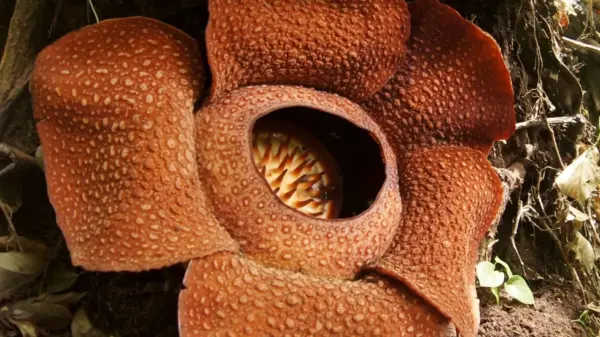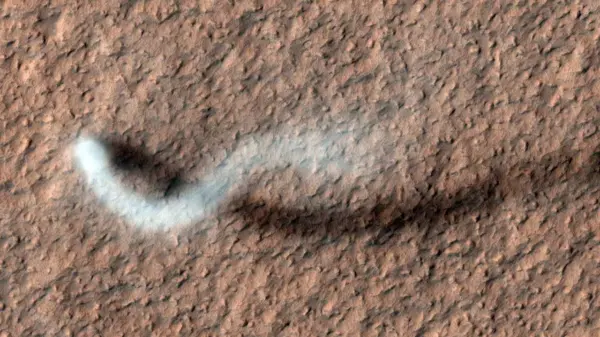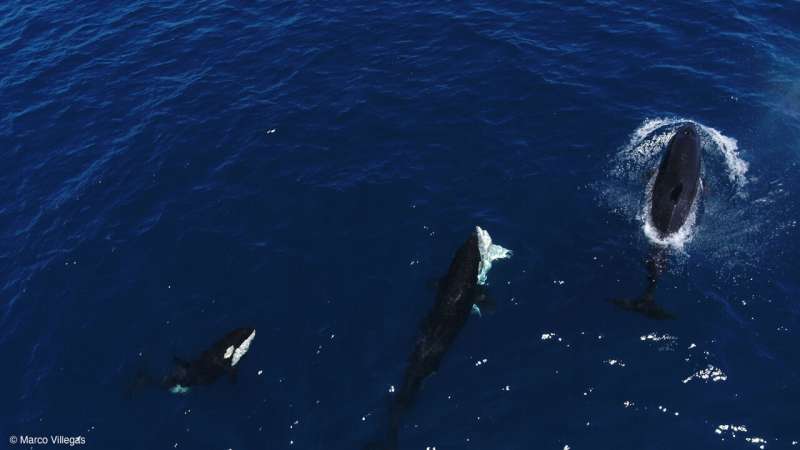A specialized pod of orcas, named Moctezuma’s pod, has been observed hunting young great white sharks in the Gulf of California. The orcas employ a unique technique of flipping the sharks upside down to access their nutrient-rich livers. This behavior highlights the orcas’ intelligence and adaptability, particularly as environmental changes affect shark nursery areas.
During routine monitoring, scientists documented two separate hunts, during which the orcas killed three juvenile great white sharks. Both hunts occurred in August—one in 2020 and the other in 2022. In these instances, five orcas worked collaboratively, pushing the sharks to the surface and flipping them upside down, a method that induces a state known as tonic immobility. This condition temporarily immobilizes the shark, making it vulnerable to predation.
Erick Higuera Rivas, the project director at Conexiones Terramar and Pelagic Life, emphasized the significance of these findings. “Orcas that eat elasmobranchs—sharks and rays—could eat a great white shark if they wanted to, anywhere they went looking for one,” he stated. This suggests that orcas may have developed strategic hunting techniques, which they pass down through generations within their pods.
Changing Dynamics in Shark Populations
The scientists noted that adult great white sharks tend to flee when orcas are present, often abandoning their seasonal habitats for months. In contrast, juvenile sharks may lack the experience to escape from these apex predators, making them more susceptible to attacks. “This is the first time we are seeing orcas repeatedly target juvenile white sharks,” remarked Dr. Salvador Jorgensen of California State University.
The research indicates that climate changes, including events like El Niño, may have altered the distribution of white sharks in the Pacific, increasing their presence in the Gulf of California. This shift could expose younger sharks to predation by Moctezuma’s pod, suggesting a new ecological dynamic.
Observations indicate that this pod has previously hunted rays, whale sharks, and bull sharks. The adaptation to hunt great whites may stem from their past experiences and learned behaviors. As Dr. Francesca Pancaldi from the Instituto Politécnico Nacional noted, “Generating information about the extraordinary feeding behavior of killer whales in this region will lead us to understand where their main critical habitats are.”
Future Research Directions
While the initial observations are compelling, researchers stress the need for a broader survey to understand the full extent of this predatory behavior. Gathering more data will clarify whether Moctezuma’s pod regularly hunts great white sharks or focuses on juveniles when they are available.
The team plans to conduct further studies to assess the dietary habits of this orca population. However, the unpredictability of orca hunts and the high costs of fieldwork will pose challenges. As noted by Higuera, “So far, we have only observed this pod feeding on elasmobranchs. There could be more.”
This ongoing research could help inform conservation efforts, potentially leading to the establishment of protected areas that mitigate human impact on these critical marine populations. The findings, published in Frontiers in Marine Science, underscore the intricate relationships between predator and prey in our oceans, highlighting the need for continued observation and study.



































































